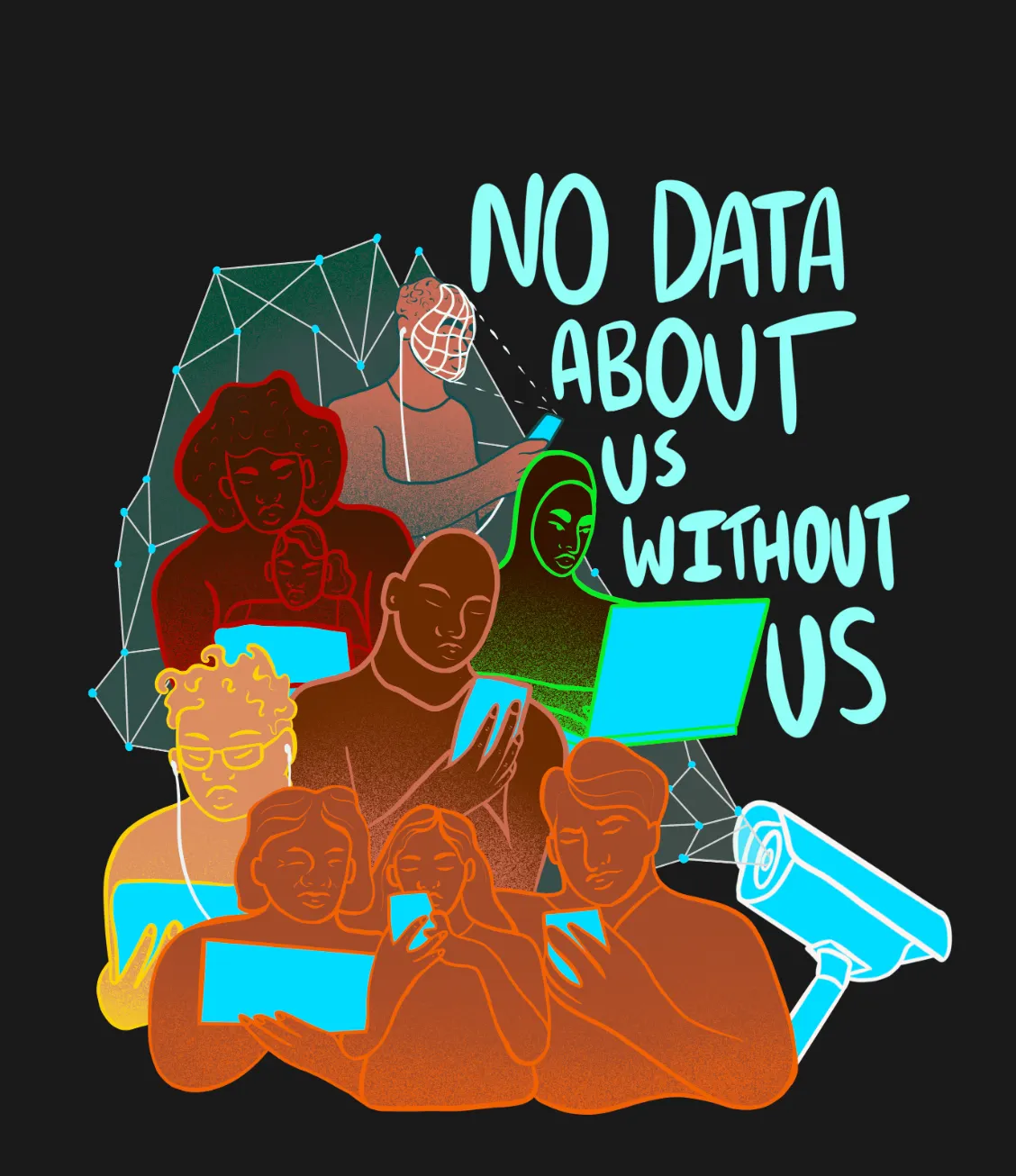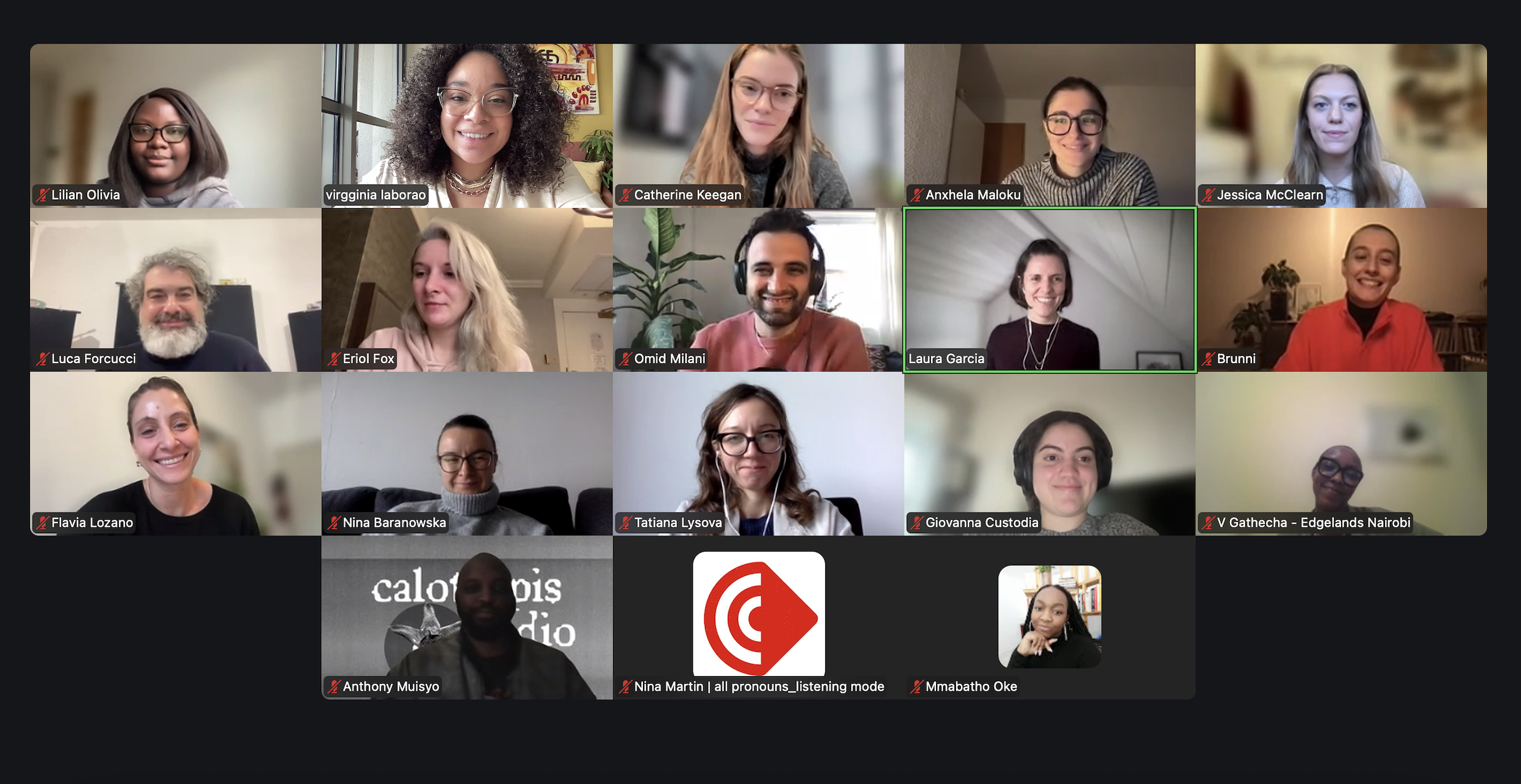Surveillance Narratives
Read about Hannah Mackaness’ experience working in advertising technology to collaborating with the Edgelands Institute. The author highlights the need for public education on the complexities of surveillance, data collection, and targeting in the digital age.

Hannah Mackaness at the event “Geneva in the Digital Age: Exploring Emerging Questions from the First Year of Edgelands Geneva” at Maison Rousseau presenting the activity “Surveillance Narratives.” June 15, 2023.
My interest in surveillance and security began when I was working for an advertising technology startup in London. I was working on a live auction mechanic to enable the real time buying and selling of video adverts and spaces to show these videos to people consuming content online. Working here I began to understand the vast number of actors involved in such a process, the scale of the data being bought and sold, the ability for targeting adverts and the impact of the combination of these factors. As a company we prided ourselves on offering ‘emotional targeting’ of adverts. The service went beyond basic categorisation of gender, age, location and offered the ability to target people who we considered to be ‘happy’ or ‘adventurous’. This was almost a decade ago - the ability for tracking, pattern recognition, live auctions and surveillance has come on leaps and bounds. Extremely small numbers of people made decisions about how this happened and even smaller groups, of primarily white men, built and maintained the code.
When I spoke to people outside of work about what I did, I began to realise that people had almost no idea how targeted adverts worked or how, or at what scale, their data was being used. Around the same time I attended the book launch of Shoshana Zuboff’s The Age of Surveillance Capitalism which examines how tech companies exploit personal data for profit and fundamentally reshape society. I found the book to be extremely frustrating; it was 704 pages long, rich with examples and completely inaccessible to people who weren’t already heavily invested in learning about surveillance. In its format, the brilliant work she had carried out would remain in expert and academic circles. It cemented in me a belief that the surveillance, advertising, security and state apparatus should do more to educate the public about the potentials for data collection, storage, harvesting, selling, pattern recognition. As major beneficiaries from this system, there is little to no motivation to share such information.
This collaboration with the Edgelands Institute is a small attempt to engage a wider audience in such issues.

Beginning in childhood, and extending into adulthood, we consume narratives about protection, safety and being looked after in which physical people exist in specific physical locations to discover and stop physical threats.
Physical architecture is taught to us from childhood; a watchtower, a lookout post, a stakeout, a police car, a roof top etc. The technology presented to us is commonly used by one person at a time or a small group of people; a notepad, binoculars, a disguise, a phone tap. The people who carry out these activities are often in a ratio of 1:1 or 1:small group. In short, the prevailing narrative is that surveillance is done by small teams or individuals to stop physical threats.

I began thinking about how this narrative has led us to broadly accept the nothing to hide argument which essentially goes; ‘if you’ve got nothing to hide, you shouldn’t be afraid of surveillance’. If in pop cultural narratives we understood the extent of surveillance, its uses, its potential uses and its combination with rapidly advancing technologies, would we be so happy to accept the status quo?


Given that this narrative starts with toys for young children, this is where I began developing ideas. Given that part of the Edgelands mission is to build dialogue outside of expert circles, I wanted to create something that was instantly recognisable, specific to the the city of Geneva and simple to use. In order to engage fully, citizens must feel like they have potential to change the ways things are built, designed or considered. With these things in mind, the city building blocks seemed like a perfect starting point.
I chose a naive style for the graphic design, in order to convey that there is a human hand behind all of these machines and decisions. It was important to transmit the message that it is not inevitable for our cities to end up as watchtowers for the state or private citizens.

The colourful blocks and packaging were chosen in order to ensure that it felt like a children's toy for 2023. This is not speculative design; the elements included are part of our existing lives and cities.


If we are to engage with ideas of security and surveillance in a meaningful way, these objects need to be part of the popular narrative. I wanted to create a toy that could sit proudly on the shelves at Manor, a Swiss store chain, next to the other wooden educational toys and police station Playmobil sets.
.jpg)

Hannah Mackaness is an interdisciplinary Designer whose practice sits at the intersection of technology, feminism and the natural world. Her interest in surveillance technology came from working at an Advertising technology startup and realising that, in general, the public have a very poor understanding of the scale of online tracking, surveillance, manipulation and trading of data and attention.



